Projects
Current work
I am a bioinformatician at the Institute for Biodiversity and Ecosystem Dynamics (IBED) at the University of Amsterdam, where I bridge the gap between biology and computer science. As part of the IBED Computational Support Team I support scientists, postdocs, and students in analyzing bioinformatic data and advancing their research projects.
Areas of expertise:
- Sequence data analysis: Metagenomics, Metratranscriptomics, Amplicon sequencing
- Programming expertise: Bash, R and python
- Research support: From experimental design to troubleshooting and data interpretation
Examples of my work
- Teaching: In the Microbial Ecology course, I guide students through the analysis of long-read amplicon sequencing data, teaching them best practices in coding and data interpretation
- Research: I analyze transcriptomic datasets to, for example, study the interaction between photosynthesis and phagocytosis in marine mixotrophs. I also develop and test workflows for microbial genome assembly, such as for Alteromonas gracilis)
- Resource development: I manage the IBED bioinformatics website, which provides a list of resources and tutorials for researchers and students.
Postdoc work
Exploring DPANN archaea using metagenomics
During my work as Postdoctoral researcher at the Royal Netherlands Institute for Sea Research (NIOZ) in the Netherlands, I was working in the lab of Dr. Anja Spang.
During this project, I used metagenomic approaches to study the diversity and metabolic potential of archaea, one of the main divisions of life alongside Bacteria and Eukaryotes. Through metagenomics, we can sequence DNA directly from environmental samples and reconstruct genomes from uncultivated organisms. This technique has revealed the diversity of microbial life and the roles of these organisms in their habitats. In particular, the DPANN archaeal superphylum contains a large diversity of putative symbiotic organisms, many of which have small genomes and limited metabolic capabilities, suggesting that they rely on other microbes for growth and survival. The few DPANN archaea that have been cultivated are likely obligate symbionts or parasites.
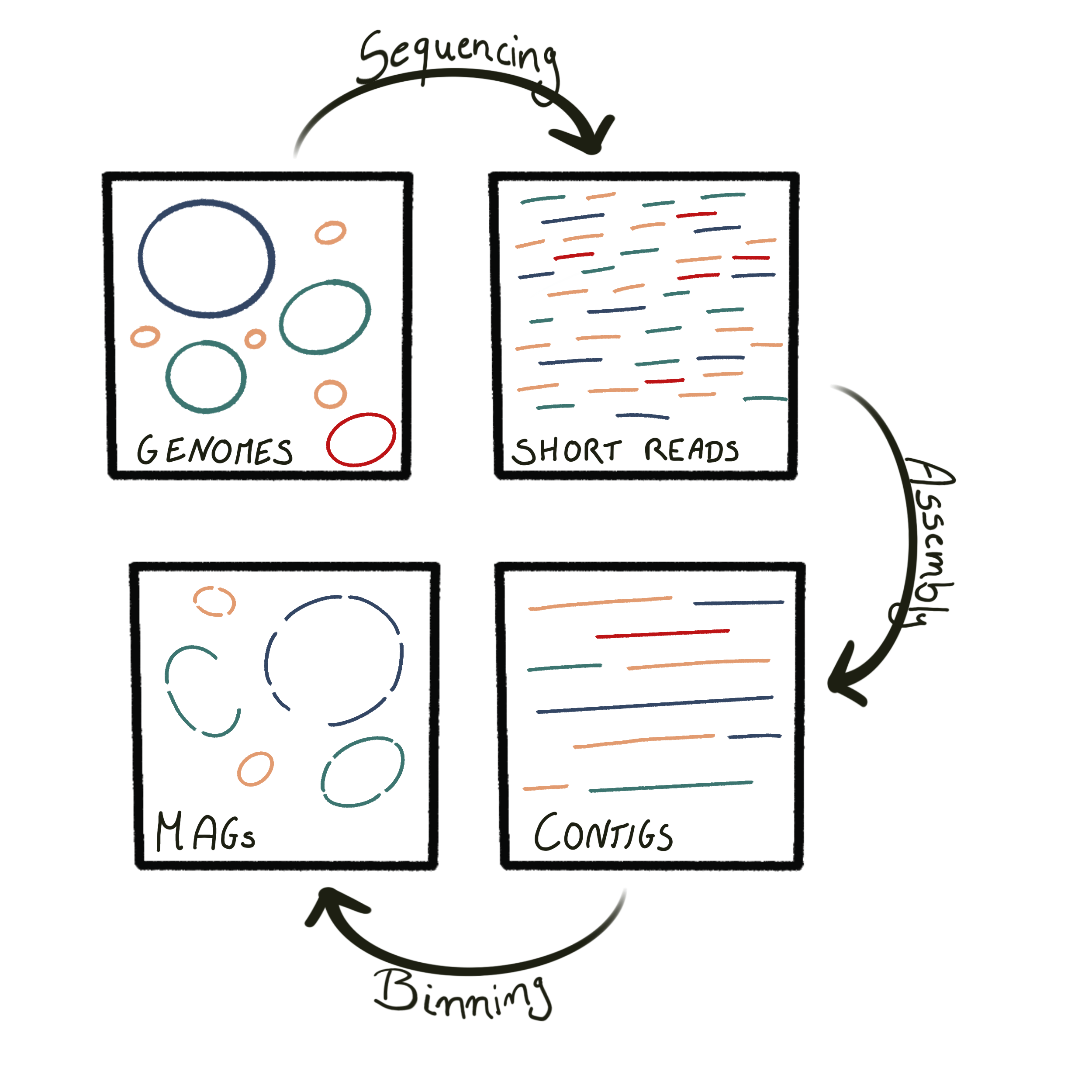
My research focused on gaining insights into the biology and evolution of DPANN archaea. Specifically, I was interested in understanding the diversity of DPANN archaea in marine environments, developing approaches to identify the interaction partners of DPANN archaea, and finding the position of DPANN in the archaeal tree of life. This will help to address the question of whether symbiosis evolved early in the archaeal domain.
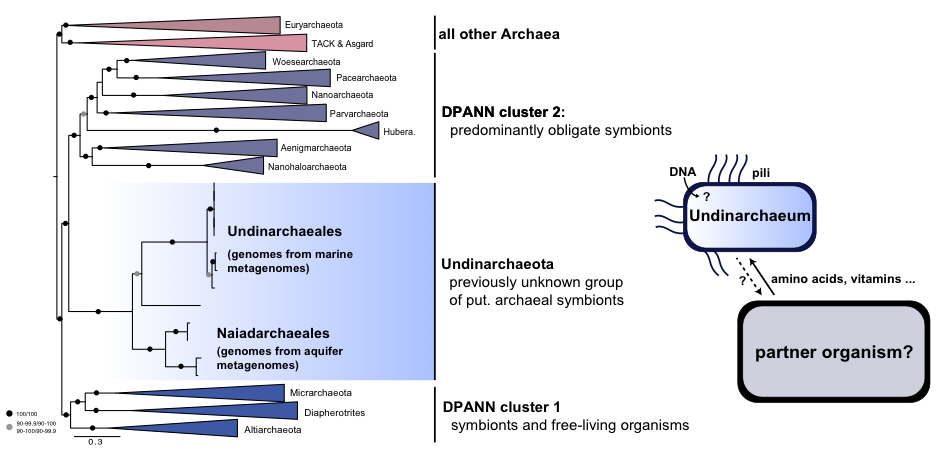
Left: Potential dependencies of Undinarchaeota with a host as inferred from metagenomics.
Find out more:
- Genomic diversity, lifestyles and evolutionary origins of DPANN archaea
- Discovery of the Undinarchaeota, a novel phylum in the DPANN archaea
Microbial Diversity in the Black Sea
Another project I pursued as postdoctoral researcher at the Royal Netherlands Institute for Sea Research (NIOZ), involved studying microbial communities in the Black Sea using metagenomic approaches. This stratified and anaerobic marine environment provides stable conditions that make it an ideal study site.
In this project, I compared microbial communities at different depths and untangled the nutrient interdependencies of microbes in both the water column and sediment. Our preliminary data has revealed that DPANN archaea are extremely diverse and abundant in the Black Sea. By understanding the microbial diversity and nutrient dependencies in the Black Sea, we hope to gain a better understanding of how these microorganisms interact with their environment and contribute to global biogeochemical cycles.

Diversity and metabolic potential of hydrothermal vent-associated microbes
During my postdoctoral work at the Marine Science Institute (MSI, University of Texas) in the lab of Dr. Brett Baker I focused on understanding the diversity and metabolic potential of microbes found in hydrothermal vent sediments. By reconstructing microbial genomes and analyzing their metabolic capabilities, I aimed to answer two key questions:
- How diverse are the microbial communities found in Guaymas Basin deep-sea hydrothermal vent sediments?
- What is the genetic, functional, and metabolic potential encoded in the bacterial genomes from these sediment communities?
Find out more:
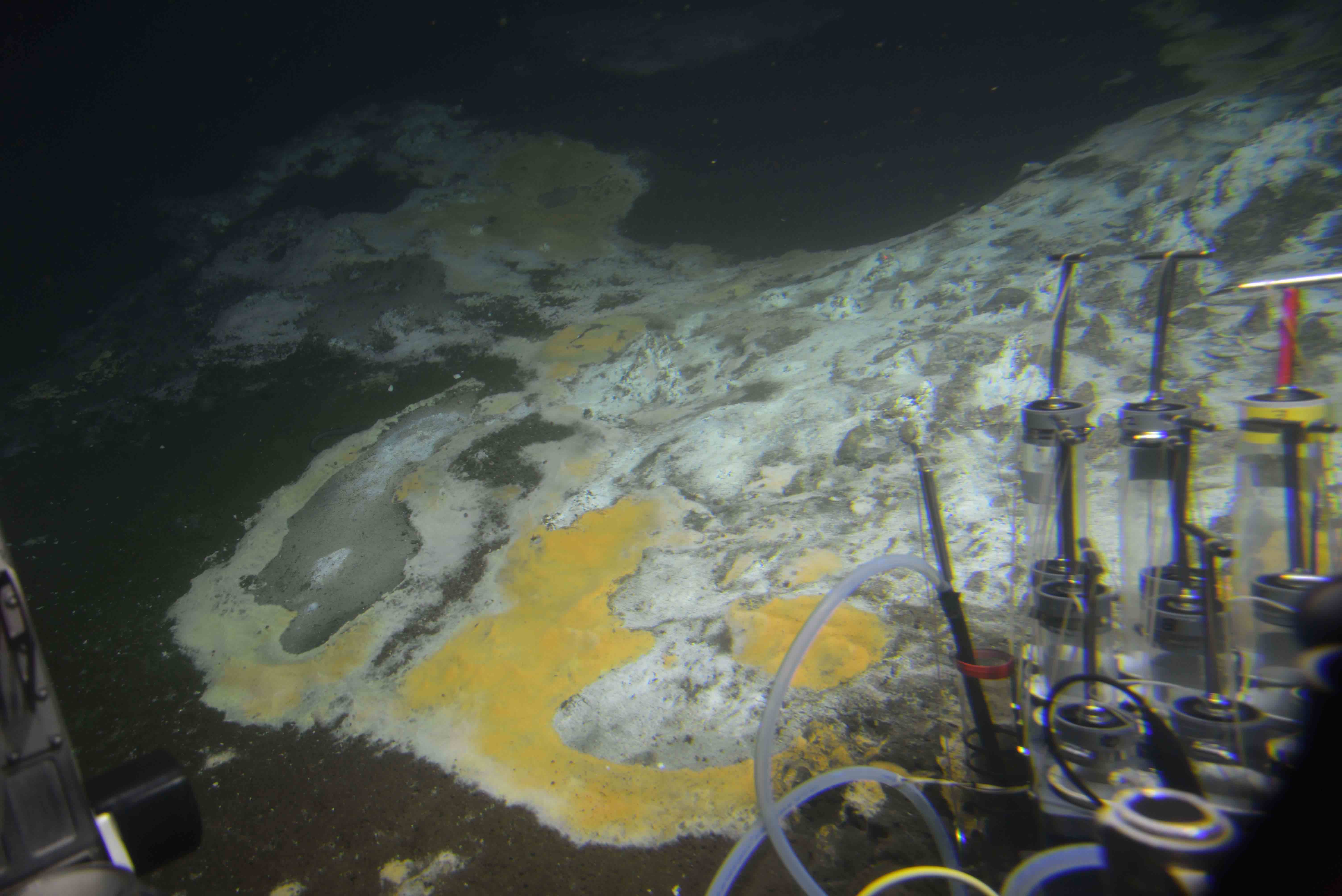
Genome reconstruction of oil-degrading bacteria
As part of my postdoctoral research at the MSI, I conducted another project on identifying hydrocarbon degradation pathways in genomes from uncultured bacteria from water affected by the Deep Water Horizon Oil Spill. My research focused on the following questions:
- Which hydrocarbon-degrading bacteria were present during the Deepwater Horizon oil spill?
- What are the pathways employed by these bacteria for oil degradation?
- What genetic features do these bacteria possess that enable them to adapt quickly to a high oil input?
Through reconstructing their genomes, we gained insight into the metabolic capabilities of these bacteria and their potential role in oil spill remediation.
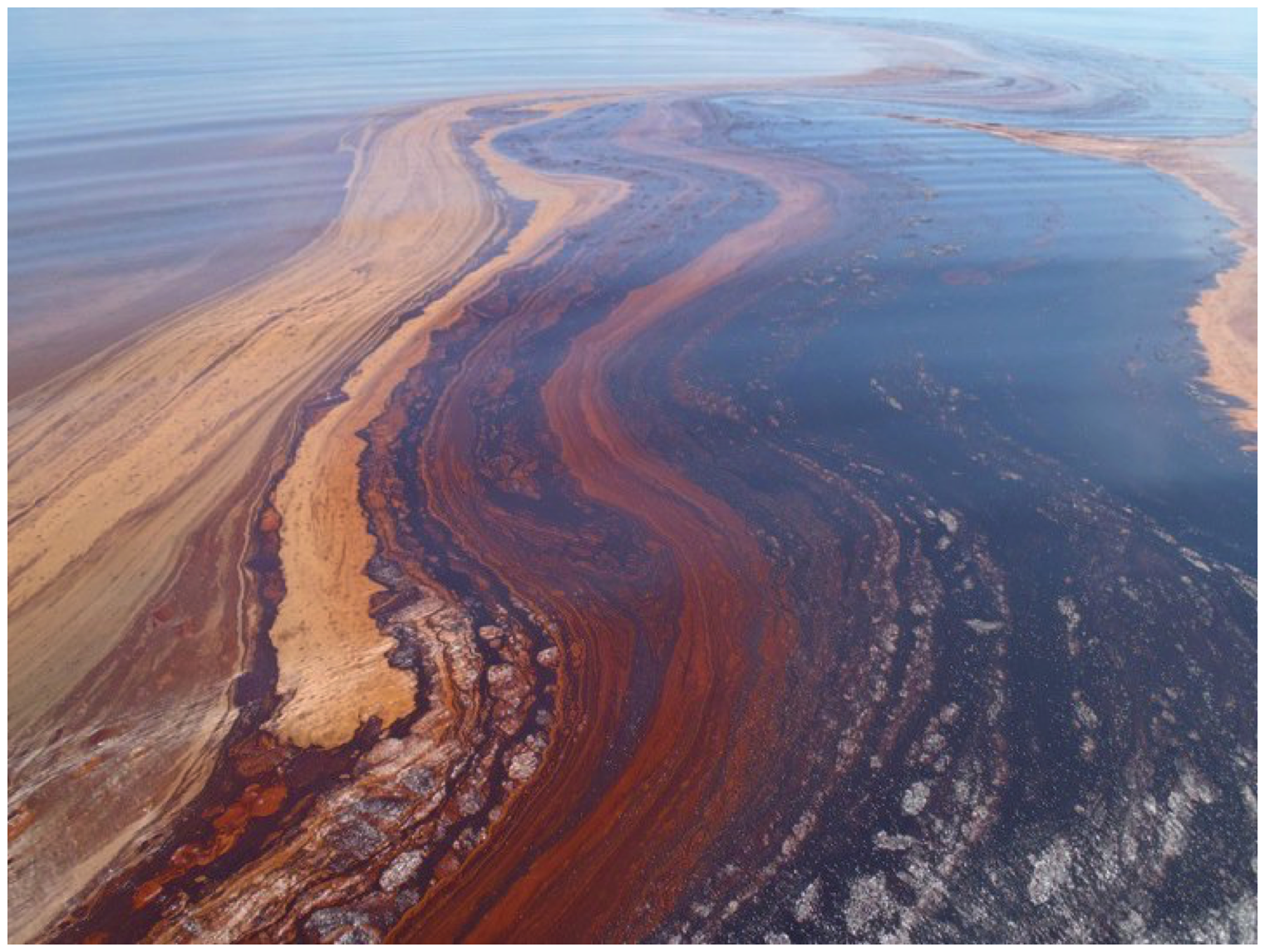
Find out more:
- Reconstructing metabolic pathways of hydrocarbon-degrading bacteria from the Deepwater Horizon oil spill
- Can we harness bacteria to help clean up future oil spills?
Previous Research
Investigating plant-associated microbes
During my doctoral research (2012-2015) in the lab of Prof. Schulze-Lefert at the Max-Planck-Institute for Plant Breeding Research in Cologne, Germany, I focused on two main research topics related to bacterial microbiota in plant roots:
- Analyzing the structure and function of the bacterial root microbiota of Arabidopsis thaliana and relative species. Here, I aimed to answer:
- What is the structure of bacterial communities found in natural soil, rhizosphere, and plant roots of Arabis alpina, Arabidopsis thaliana, and Cardamine hirsuta?
- What factors (e.g., environment, soil type, flowering) shape the assembly of bacterial communities?
Find out more:
- Root microbiota dynamics of perennial Arabis alpina are dependent on soil residence time but independent of flowering time
- Quantitative divergence of the bacterial root microbiota in Arabidopsis thaliana relatives
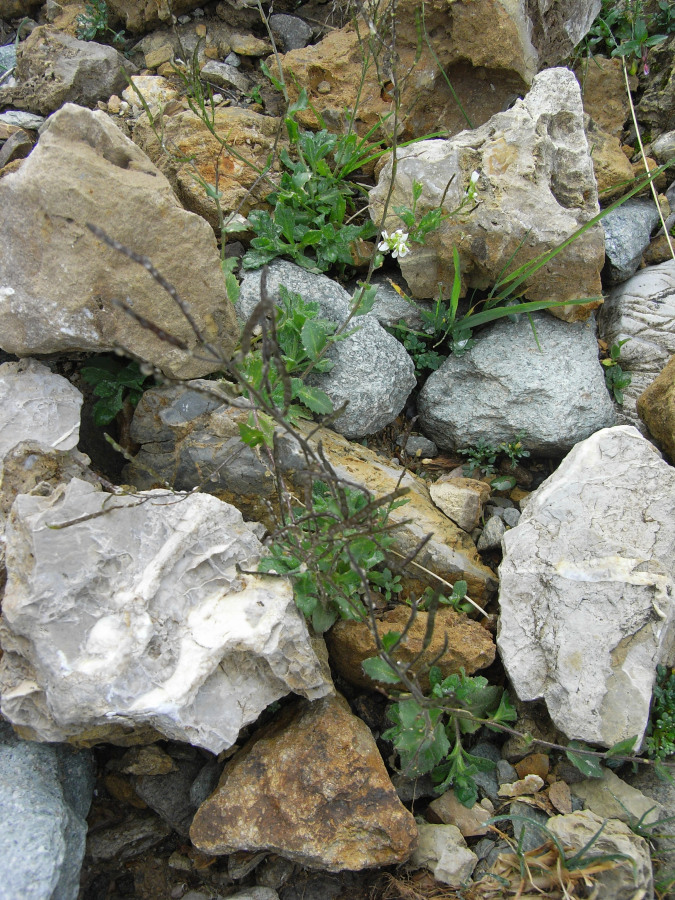
the French Alps
- Cultivating root-associated rhizobia and studying their plant growth-promoting properties on Arabidopsis thaliana. My research questions were:
- How diverse is the rhizobia population found on the roots of Arabidopsis thaliana?
- What is the role of root-associated rhizobia in plant growth?
- How do rhizobia affect the plant transcriptome?
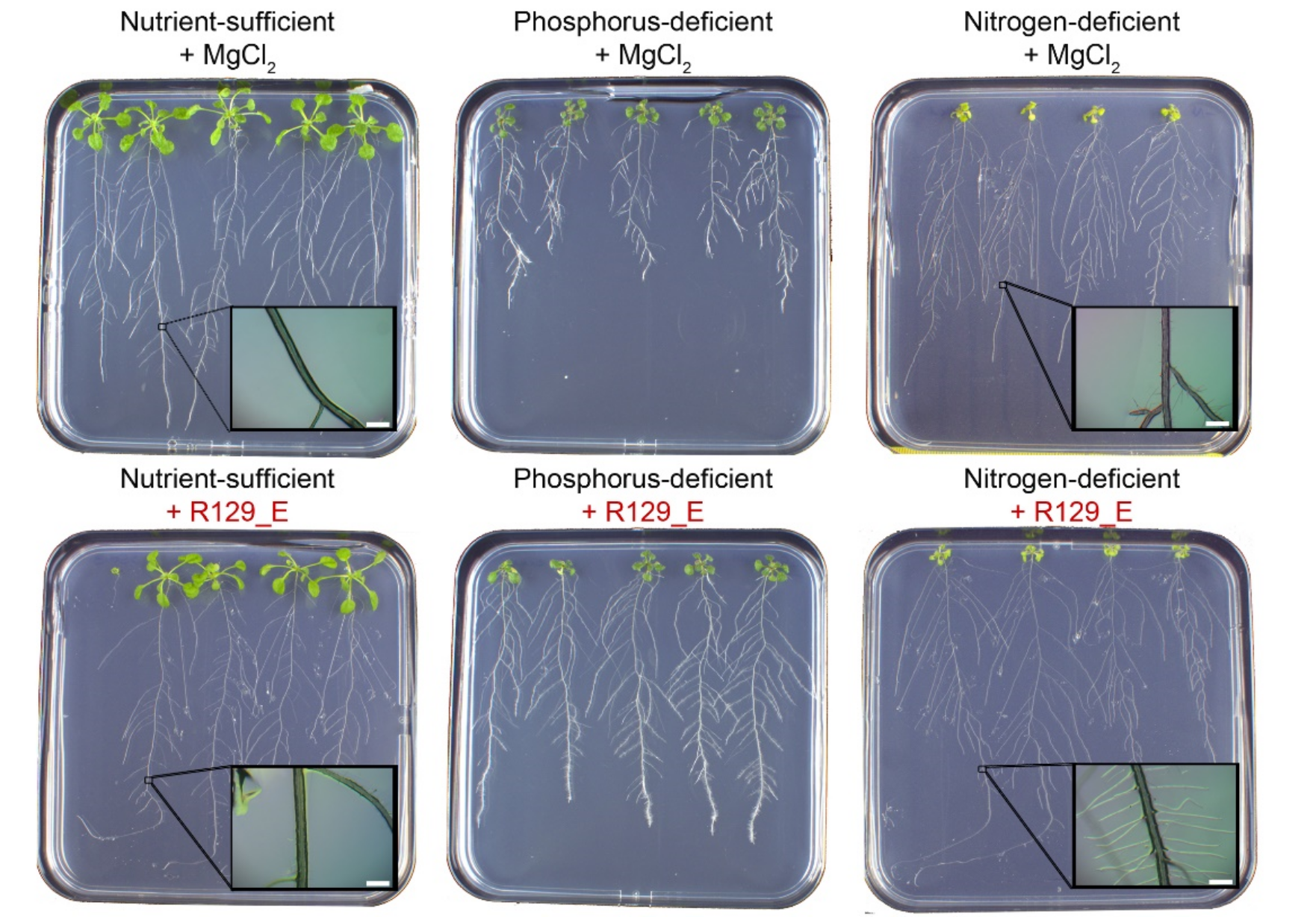
under different nutrient conditions
Find out more:
Investigating auxin-inducible genes in Arabidopsis thaliana
For my undergraduate research, I worked in the QuintLab at the Leibniz Institute for Plant Biochemistry in Halle, Germany. My thesis focused on investigating auxin-inducible genes in Arabidopsis thaliana using the new experimental technique of translating ribosomal affinity purification (TRAP).
Specifically, I:
- Established TRAP as a new experimental technique to isolate cell-type-specific mRNA, as well as developed new cell-type-specific marker lines.
- Investigated the effect of auxin application on the expression of marker genes in different root-cell types.